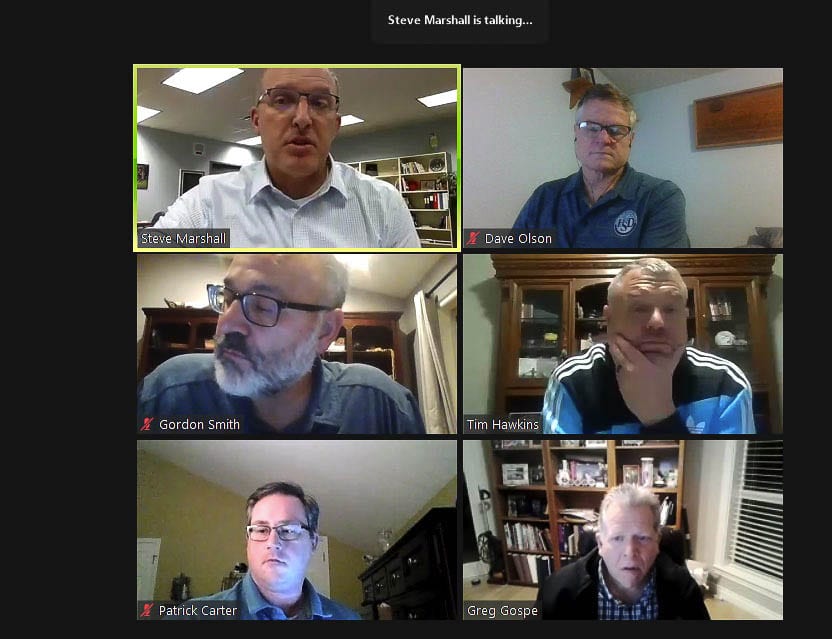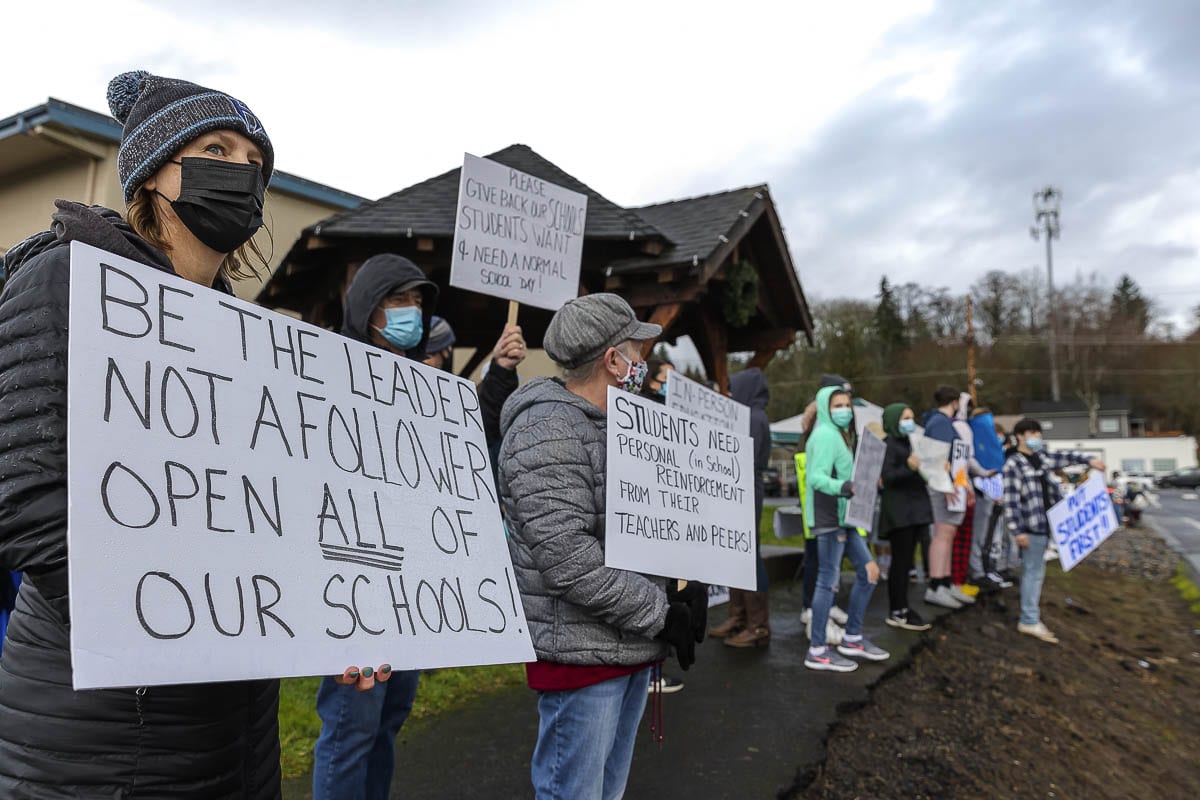The first phase of the reopening with expanded in-classroom instruction will begin Jan. 19
In the aftermath of Gov. Jay Inslee changing his COVID-19 restrictions in December, school boards have begun revising their plans for reopening schools for in-classroom instruction. The Hockinson School Board met for a special meeting Tuesday evening to hear Superintendent Steve Marshall’s new plan.
The meeting began with citizen communication. Two parents spoke, encouraging the board members to move the district ahead faster, and to encourage a focus on the social-emotional health of the children. Betsy Oliverio read the names of five children who had taken their lives during the pandemic lockdown.
Marshall’s plan was to begin partial opening on Jan. 19 for grades K-3. It would gradually add small groups of “students in need” for different grades on Feb. 1. There was no specific date where all students would be back in the classroom. That would depend on the number of COVID-19 cases in Clark County.

He offered the school board two options for in-classroom instruction. One had small groups of up to five students per class meeting two days per week. The other offered groups of up to 15 students per class, meeting four days per week.
The first hour of Tuesday’s meeting included lots of questions and clarifications. Information was presented on what other school districts are doing, both in the region, statewide, and the occasional mention of other states including California. It was mentioned plans for middle school were not finalized. There was an option of having three classes per day instead of six classes. Marshall indicated a need to get the teachers on board with any plan.
Then board member Tim Hawkins weighed in. “The decision tree is a guideline. It’s not a law; it’s not a rule or a proclamation. It’s not really a recommendation. Literally, it’s just a guideline.”
“One of the things I love about Hockinson, is that Hockinson has the ability to be creative and lead, and find a way,” he said. “I am disappointed in where we are as a board, where we’re at as a district. We’re not leading, we’re following.”
Hawkins reminded the board, “our parents have spoken. They want their kids back in school.” He encouraged the board to be far more aggressive to get kids back in school. They can use other models within Washington or outside the state. He pointed out there are school districts in counties that have significantly higher COVID-19 rates than Clark County, where children are in the classroom.
During Marshall’s presentation, he provided the board data showing that for all their in-school instruction to kindergarten and other “children in need,” from the beginning of the school year there have been zero cases of transmission of COVID. The district had identified two cases of the virus and one possible case, but there was no evidence of the virus being transmitted to others.
Hawkins acknowledged that record. “You showed our track record, which is essentially a clean sheet since this whole thing happened.” He said it’s time to stop being scared and move forward. “It’s time to call our own bluff and say, it’s time to press harder.” He said the four-day model should be the “bare minimum.”
He wants all children offered the choice to be back in the schools by the start of the semester. He wanted parents to make the decision regarding whether their children continue to remain at home and do online learning, or be in the classroom with their teacher.
The hybrid model of instruction is killing the teachers according to Hawkins. He suggests teachers be in the classroom and have a zoom broadcast of the lessons. That way if children stay at home, they can simply watch the classroom from home and get the instruction. The majority of children can be in the classroom in a safe environment to receive that in-person instruction.
Marshall was asked how he would make the determination between the two models proposed, for which he would implement. “I think that would be an agreement between HSD and the teacher union,” he said.
Marshall said they’ve been following guidance from the health department. That guidance has changed, so it gives the district an opportunity to open it up a little bit. “I don’t know if I call it aggressive,” he said. “But I do think that we’re moving in that direction.”
Hawkins responded. “I want to make sure I’m crystal clear. I’m not recommending we put anybody’s kids, parents, teachers or staff in harm’s way. There’s not one iota of that. But I believe that we are smart enough as a school district. We’re unique enough as a school, we’re smart enough as a board. We’re smart enough as a bunch of leaders that we can find a way to do this safely. But get on the front foot and get off the back foot. That’s what has to happen.”

Board member Greg Gospe offered the idea of moving the teachers from classroom to classroom if needed and keeping the kids in one room. With most of the technology on the cloud, it would be easy for teachers to access it from any classroom. This would reduce the numbers of individuals moving between classes, and therefore reducing the risks for transmission.
Other board members weighed in, acknowledging the balancing act the superintendent has between the teachers and staff, the board, and parents and students. They indicated a desire to move faster if possible.
The board agenda offered two options in a transition plan for reopening. Something needed to be approved for the superintendent to move forward. One was the two-day-a-week model with smaller, five-person groups. The other was for four-day-a-week instruction with larger, 15 person groups. That may include three class periods per day instead of six.
The board chose to implement the first part of the plan, with grades K-5 going to in-classroom instruction by Feb. 1. The first phase of the reopening with expanded in-classroom instruction will begin Jan. 19.
The board will meet again on Mon., Jan. 11 where Marshall will offer the board new options for the rest of the students to return to the classroom, based upon the discussion he heard from the board.




